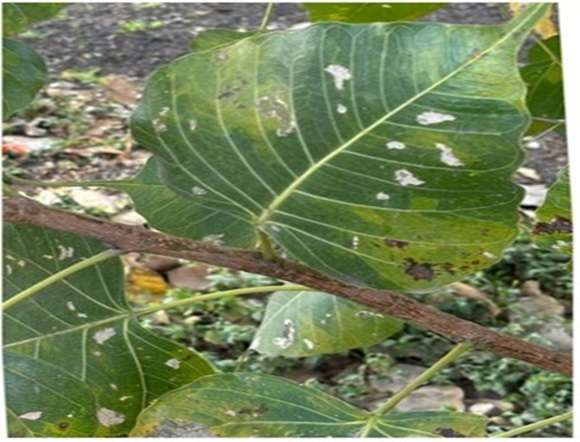

Habitat:
(Sacred Fig) is native to the Indian subcontinent and is commonly found in tropical and subtropical regions of South Asia, including India, Nepal, Sri Lanka, and Bangladesh. It thrives in riverbanks, forests, and temples and is often planted in sacred groves]
Flowering:
(Sacred Fig) flowers are small, inconspicuous, and typically greenish-yellow. It has syconia, which are fleshy, fig-like structures that contain both male and female flowers inside. These syconia develop into fruits after pollination by tiny fig wasps. The flowering period generally occurs during the spring and summer months, but the syconia can be seen throughout the year.
FRUITING: It produces small, round fruits known as syconia, which are initially green and turn yellow to orange as they ripen. These fruits are borne on the tree throughout the year, with peak ripening occurring during the summer and fall. The pollination of these fruits is carried out by specialized fig wasps that enter the syconia to pollinate the internal flowers.
Climatic Conditions:
(Sacred Fig) thrives in tropical and subtropical climates. It prefers warm temperatures between 25°C and 35°C and is sensitive to frost. The tree grows best in areas with moderate to heavy rainfall and high humidity, although it can tolerate some drought once established
Seed Propagation:
Is propagated by collecting seeds from ripe fruits, cleaning them, and sowing them in well-drained soil. The seeds should be lightly covered with soil and kept in humid, warm conditions for germination, which typically takes 2–4 weeks.
Part used:
Leaves – Used in traditional medicine for asthma, skin diseases, and wound healing.
Bark – Used for its astringent, anti-inflammatory, and antibacterial properties.

Leave A Comment